Free, downloadable resources to equip parents as they help their children grow in the ability to stay safe and responsible online.

Social Media, Cyberbullying, and Online Safety Glossary
In our Glossary below, we define the terms you need to know in the realm of social media, cyberbullying, and online safety, so that you are increasingly informed about technological jargon as you work with the youth under your care.(You can also download a distributable PDF of our Social Media, Cyberbullying, and Technology Terms Glossary). […]
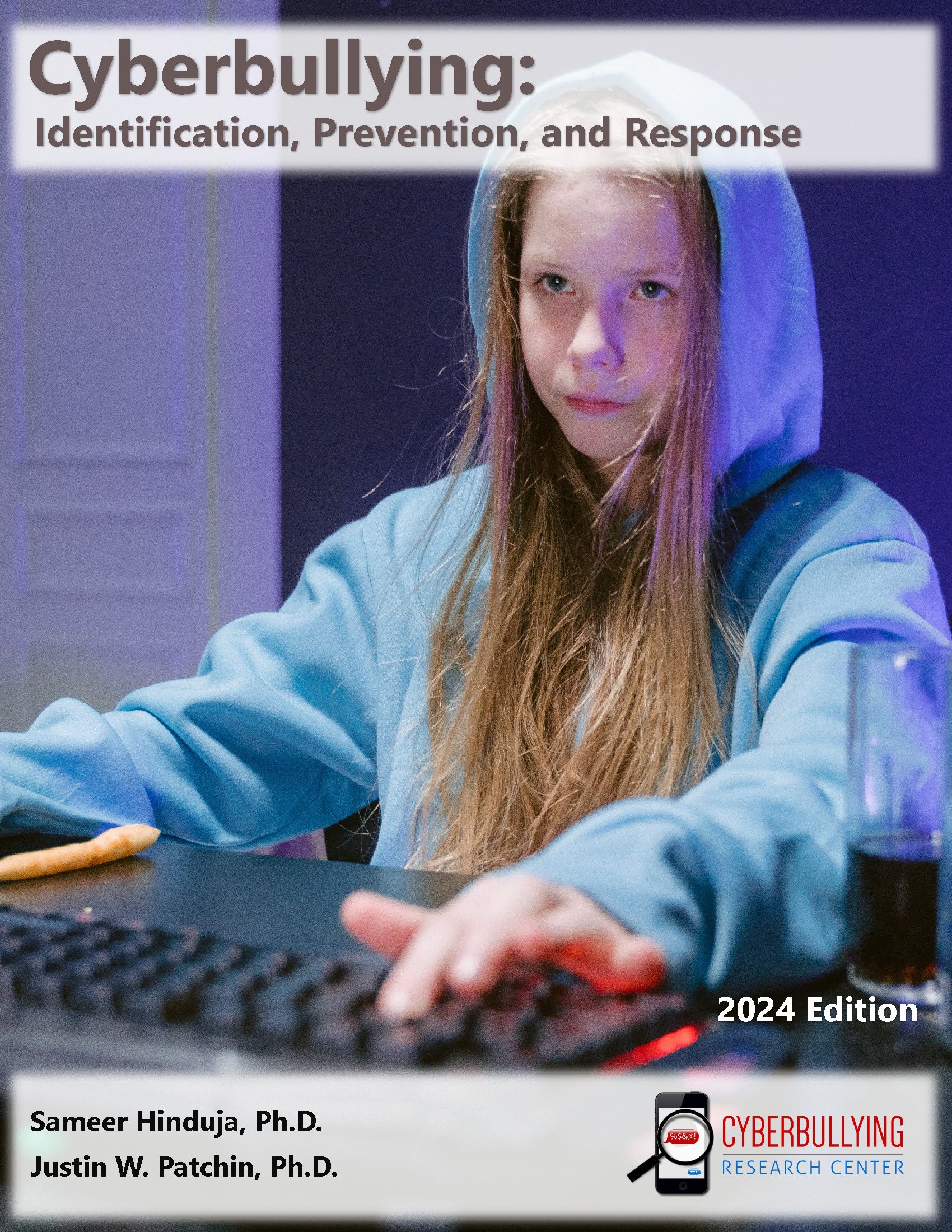
Cyberbullying Fact Sheet: Identification, Prevention, and Response
UPDATED for 2024! This detailed guide is a nine-page summary – filled with as much useful information as possible – to equip educators, parents, and other youth-serving adults to spot cyberbullying, respond to it appropriately and meaningfully, and to prevent its future occurrence among those they care for. If you only have time to read […]
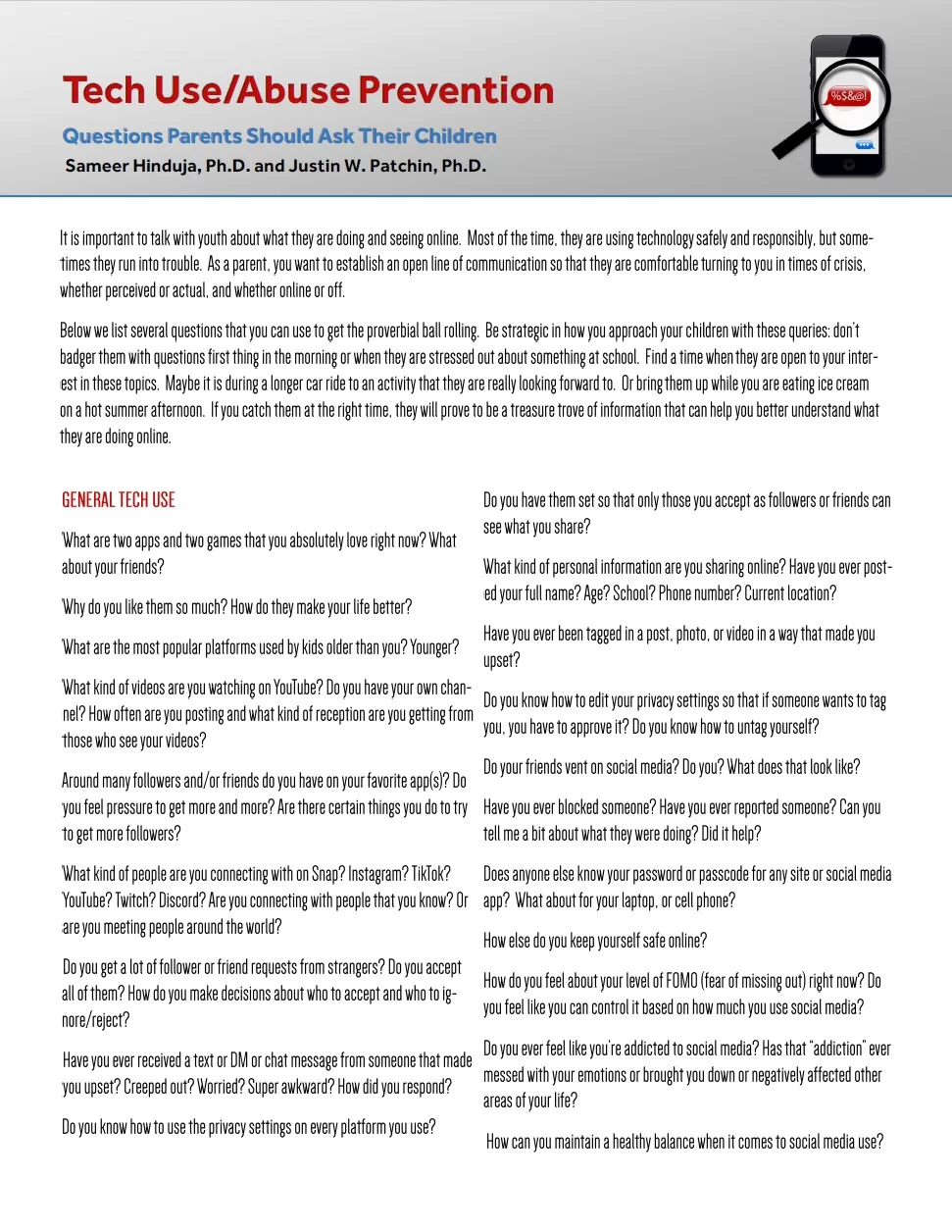
Tech Use/Abuse Prevention: Questions Parents Should Ask Their Children
Spanish Translation Available Here It is important to talk with youth about what they are doing and seeing online. Most of the time, they are using technology safely and responsibly, but sometimes they run into trouble. As a parent, you want to establish an open line of communication so that they are comfortable turning to […]
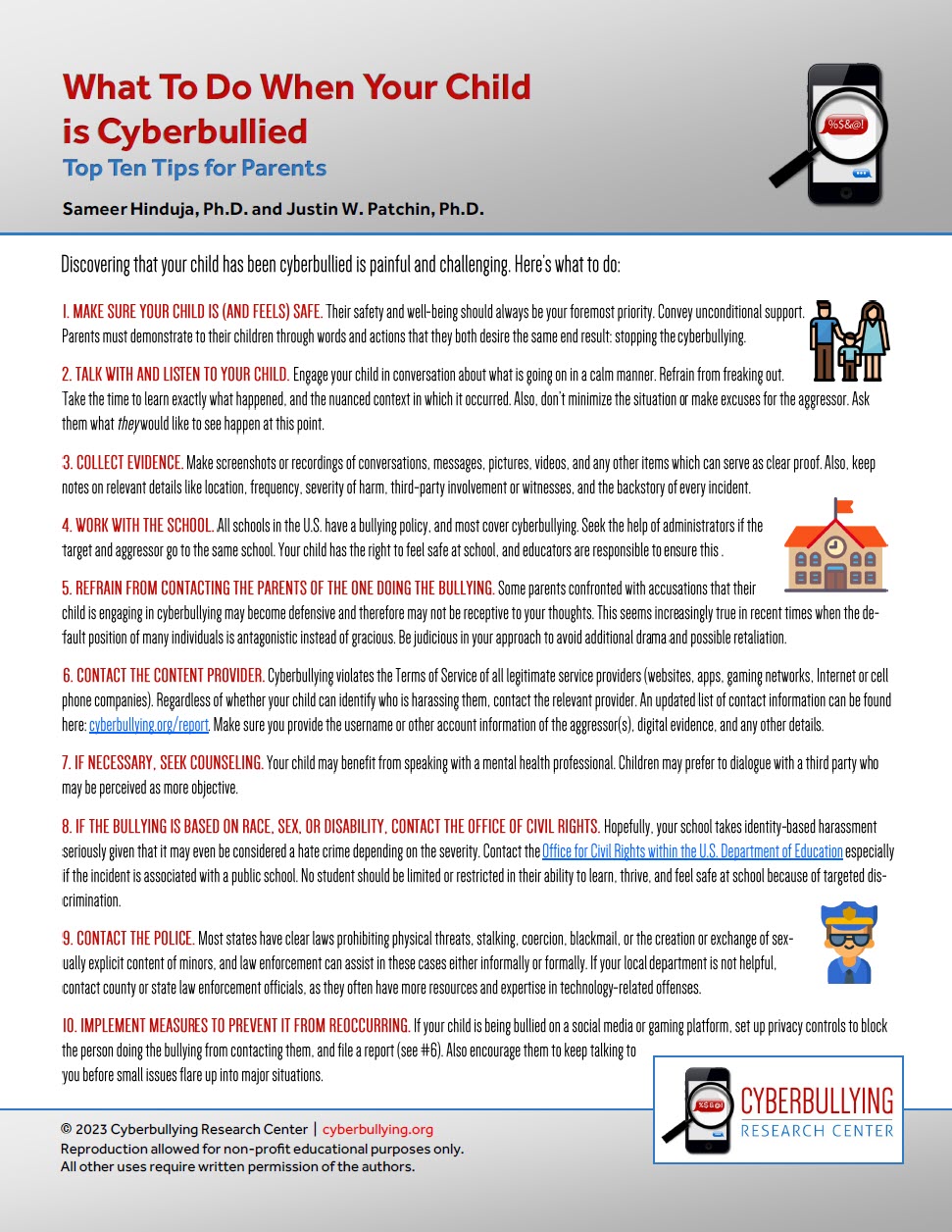
What To Do When Your Child is Cyberbullied: Top Ten Tips for Parents
(For a formatted .pdf version of this article for distribution, click on the image above [or click here]). Spanish Translation Available Here Discovering that your child is being cyberbullied is painful and challenging. Here’s what to do: 1. MAKE SURE YOUR CHILD IS (AND FEELS) SAFE. Their safety and well-being should always be your foremost […]
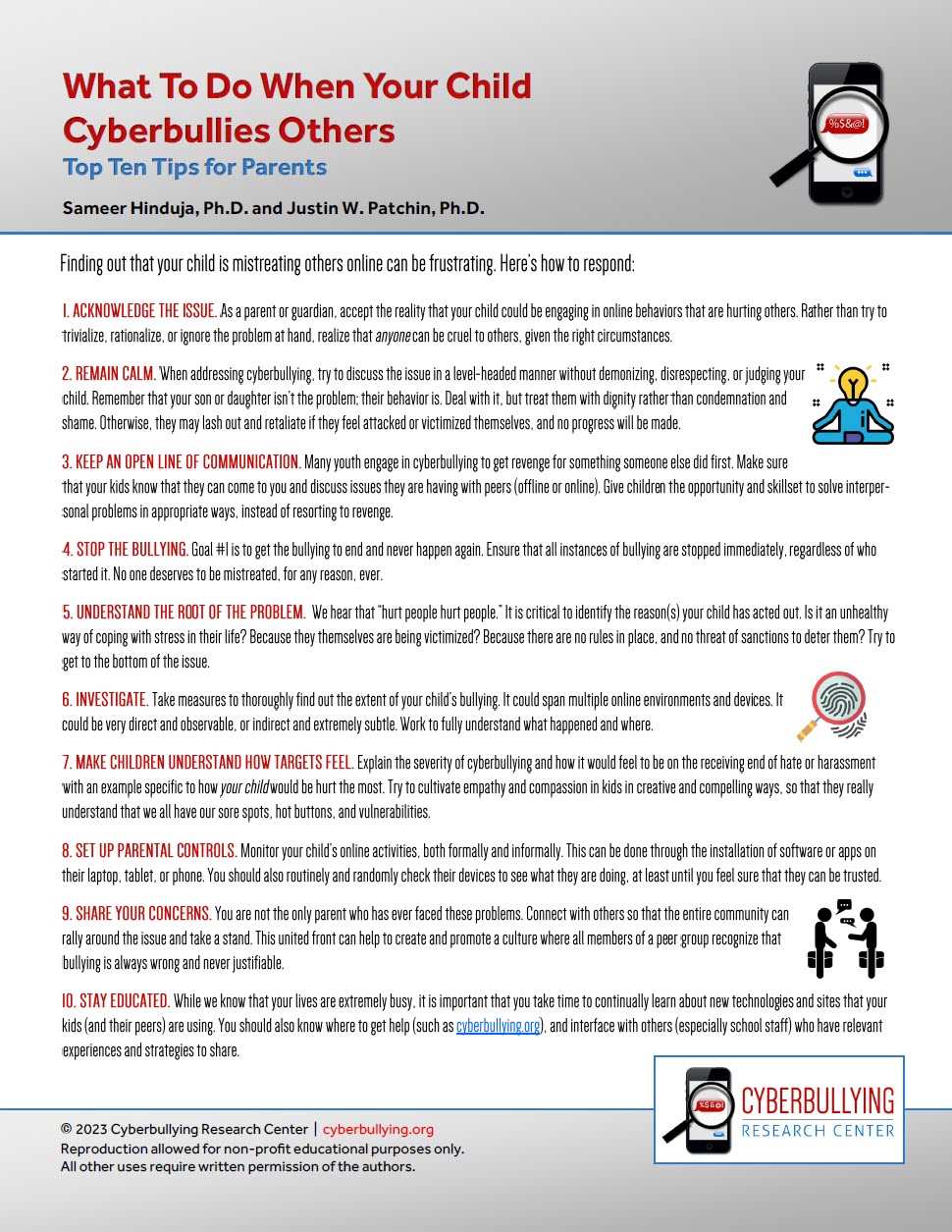
What To Do When Your Child Cyberbullies Others: Top Ten Tips for Parents
(For a formatted .pdf version of this article for distribution, click on the image above [or click here]). Spanish Translation Available Here Finding out that your child is mistreating others online can be frustrating. Here’s how to respond: Citation information: Hinduja, S. & Patchin, J.W. (2023). What To Do When Your Child Cyberbullies Others: Top […]
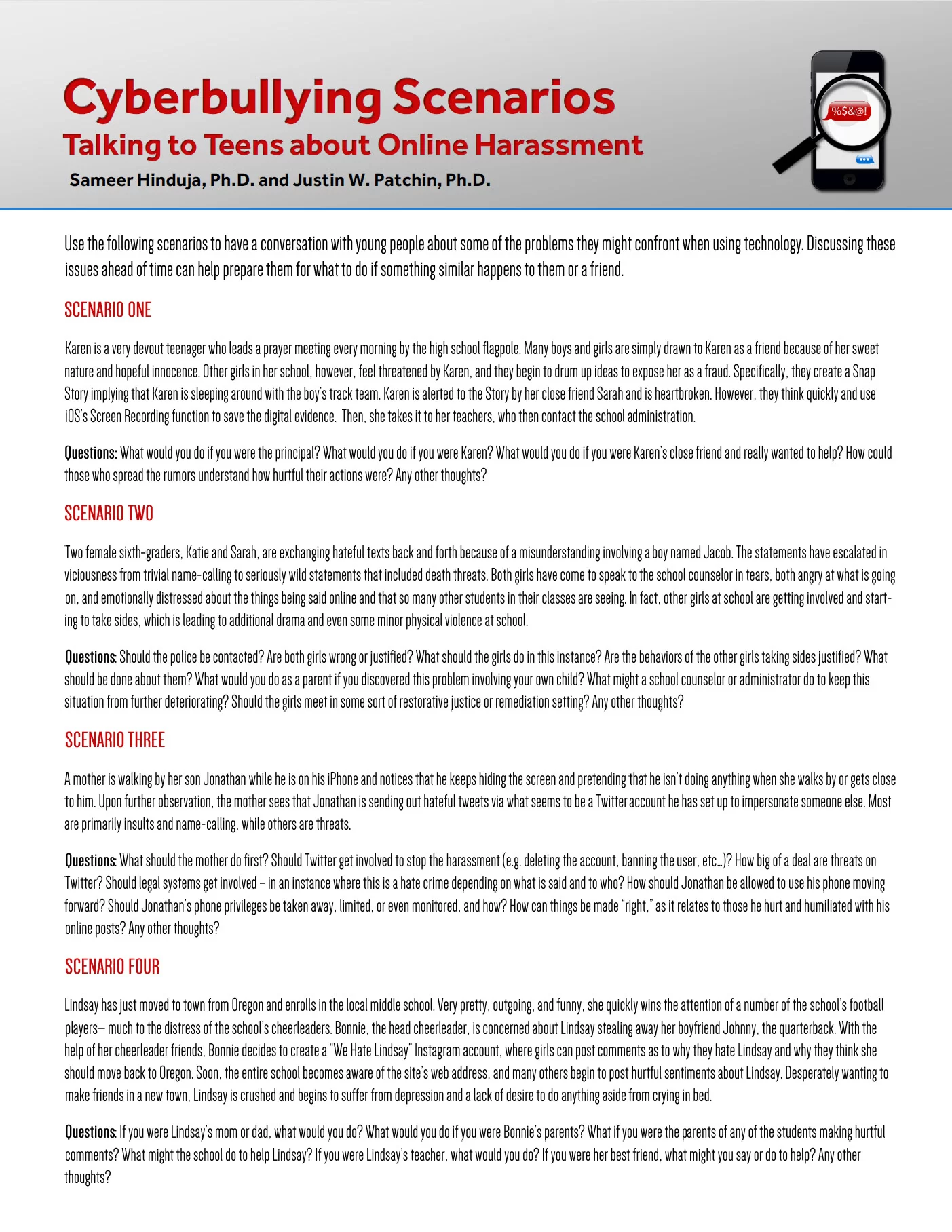
Social Media and Tech Misuse Scenarios
This resources provides scenarios that parents, educators, and other adults can use to discuss issues that may come up when young people are using technology. Hinduja, S. & Patchin, J. W. (2023). Social Media and Tech Misuse Scenarios. Cyberbullying Research Center. Retrieved [insert date], from https://cyberbullying.org/Social-Media-and-Tech-Misuse-Scenarios.pdf Download the Scenarios

Technology Use Contract
Use this Technology Use Contract to establish an open line of communication regarding the child and parent expectations when it comes to using technology. Download PDF
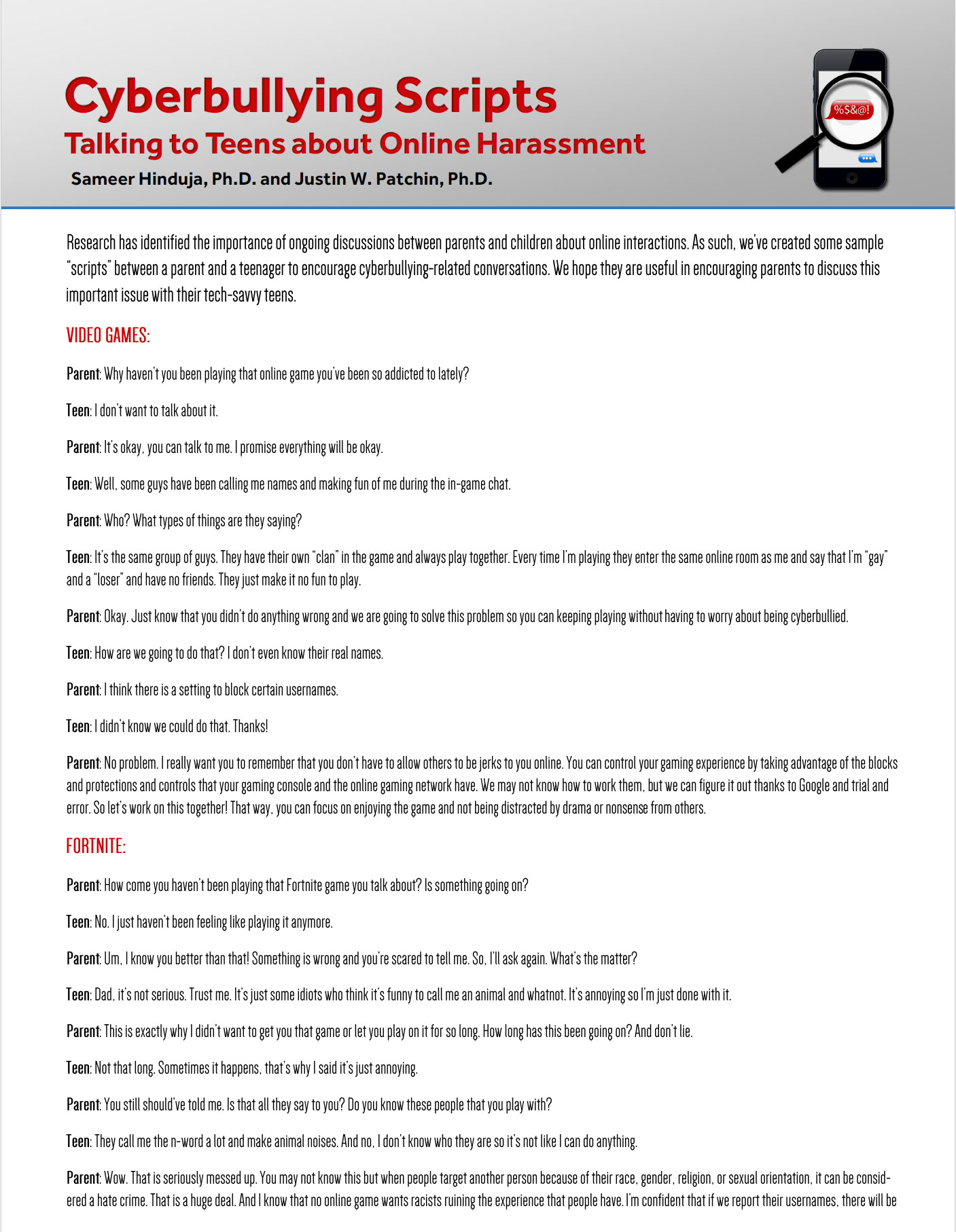
Cyberbullying Scripts for Parents to Promote Dialog and Discussion
Provides parent/teenager “scripts” to promote dialogue and discussion about cyberbullying.
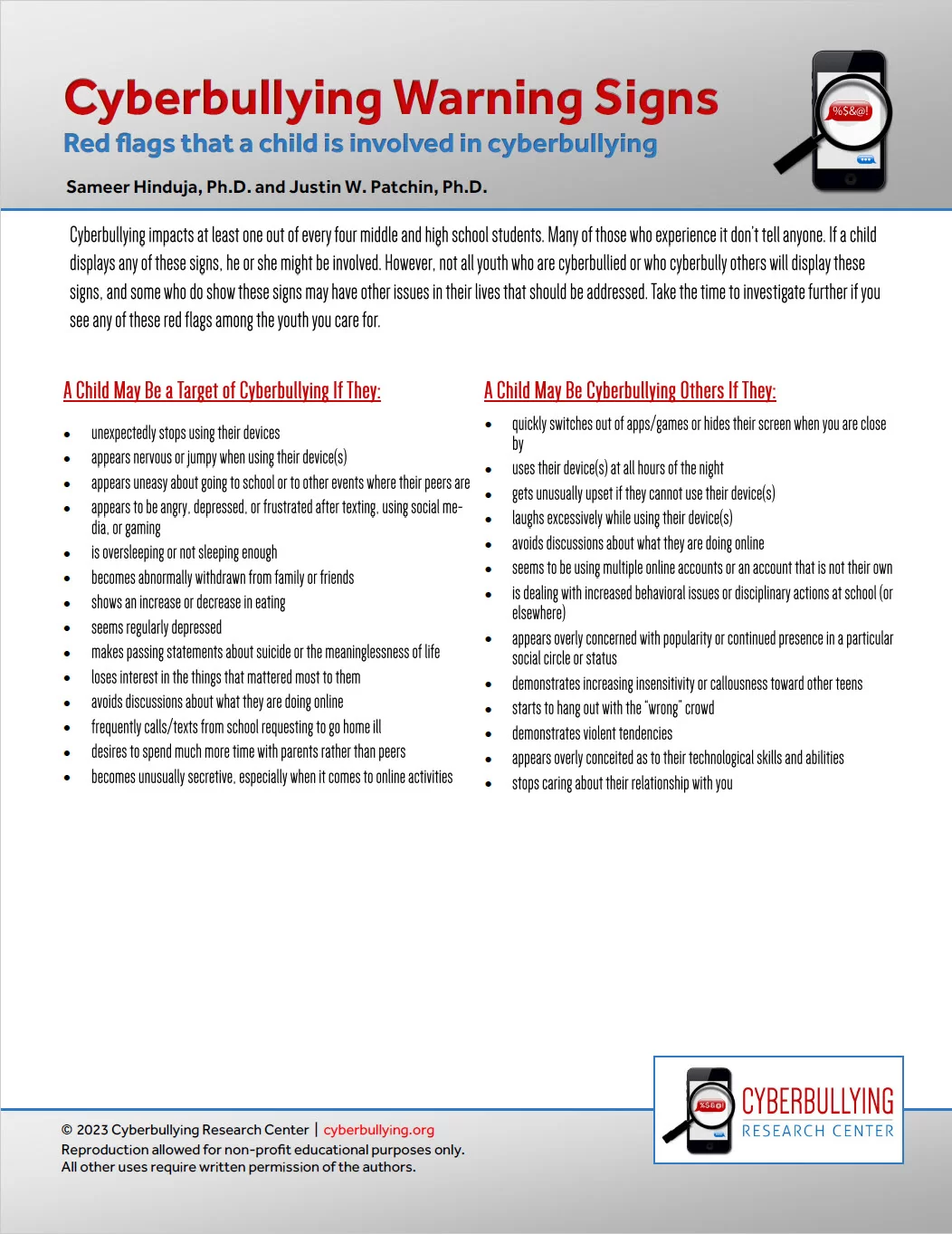
Cyberbullying Warning Signs
Cyberbullying impacts at least one out of every four middle and high school students. Many of those who experience it don’t tell anyone. If a child displays any of these signs, he or she might be involved. However, not all youth who are cyberbullied or who cyberbully others will display these signs, and some who […]
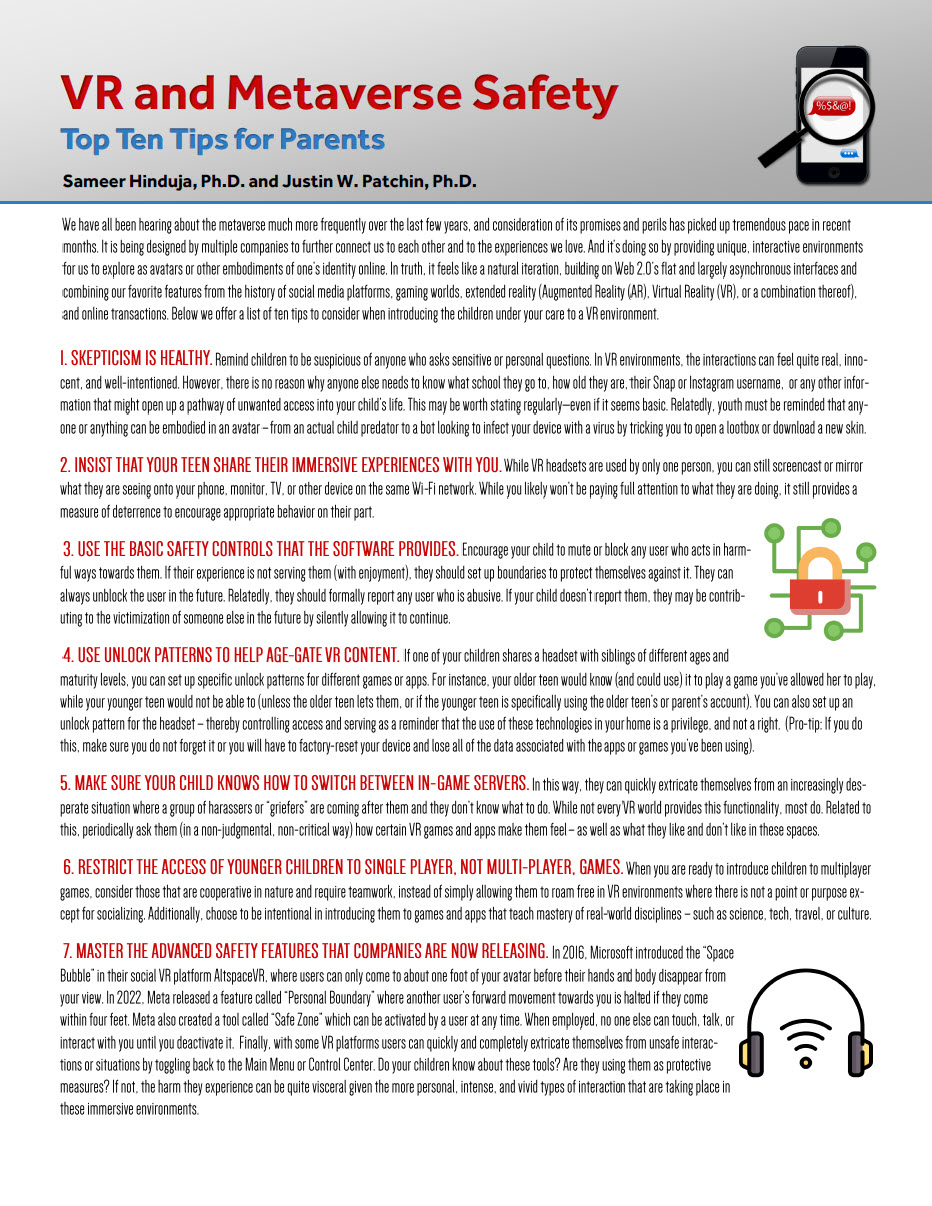
VR and Metaverse Safety: Top Ten Tips for Parents
(For a formatted .pdf version of this article for distribution, click on the image above [or click here]). We have all been hearing about the metaverse much more frequently over the last few years, and consideration of its promises and perils has picked up tremendous pace in recent months. It is being designed by multiple […]

